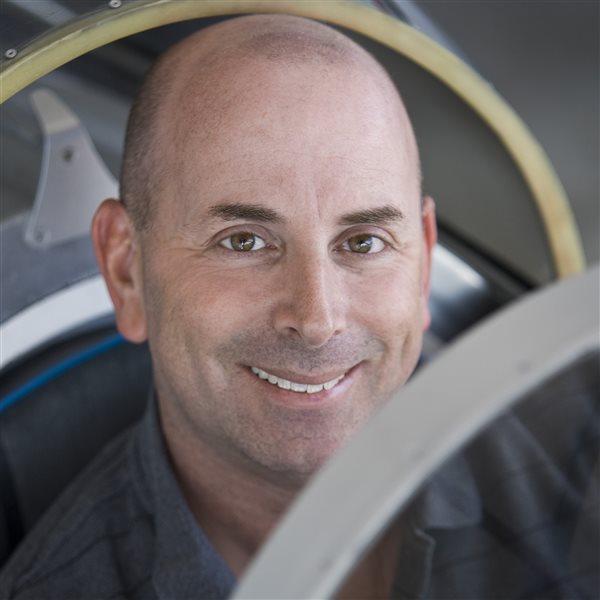Volunteer Airlift in the Carolinas
GA pilots help in Hurricane Helene’s wake

No organizational chart. No job definitions. There was only an acute need among tens of thousands of people cut off by the remnants of Hurricane Helene from food, drinking water, and electricity in the mountains of Georgia, Tennessee, and North and South Carolina and an overwhelming desire to help among those who could.
At Greenville Downtown Airport (GMU) in South Carolina, the relief effort started with a few social media posts.
Julia Byron, a flight instructor and office manager at Greenville Aviation, took a flight school airplane loaded with supplies and dropped them at Asheville Regional Airport (AVL), the distribution point at the epicenter of hurricane-spawned floods.
Isaiah and Lori Burch, owners of Happy Helicopters, filled an R44 with as much as it would carry and flew to hard-hit Hendersonville, North Carolina, and landed at the Western North Carolina Air Museum there. Talking to residents allowed volunteers to customize future loads to bring exactly what people most needed.
“They’d ask for Benadryl, or chain saws, or work gloves,” Lori Burch said. “That allowed us to bring exactly the kinds of tools and supplies to the places they could do the most good, and we could do it directly without any bureaucracy.”
The people of Greenville, many of whom were living without electrical power at home, responded by loading their cars and trucks with supplies and bringing the goods to a collection point at GMU.
Byron became a de facto flight scheduler while fellow instructor Zach Martin and Sandy Gold organized the south ramp. They took over a corporate hangar to form 400-pound loads of more than 1 million pounds of donated items and marshalled arriving airplanes into lines at the self-serve fuel pump. The operation ran so smoothly that some pilots never stepped out of their airplanes. They just delivered their goods and took off to retrieve more.
“The lines of people driving up in their cars was especially touching,” Byron said. “You know a lot of them aren’t in the best of circumstances themselves, yet they’re going out of their way to help others even less fortunate.”
Gold, a nurse anesthetist, drove her camper to the airport and lived there for a week after the hurricane.
During that time, volunteers flew more than 300 missions to Asheville, Hendersonville, Mountain City, and other destinations that were inaccessible by road. The aircraft making those trips ranged from single-engine Cessnas to a Gulfstream corporate jet.
Flight schools at Greenville that normally compete came together to collect goods and distribute generators, fuel containers, extension cords, and food around the region. Donations poured in via GoFundMe and Venmo.
“I’ve never seen an airport community come together like this,” Byron said. “It’s been nothing short of extraordinary. We knew we had the airplanes and pilots, and their willingness to do whatever has to be done to help is just remarkable.”
As water levels dropped and washed-out roads got repaired, it became possible to deliver relief items by truck in larger volume and the need for aircraft deliveries began to diminish and similarly hastily assembled airport distribution points such as Hickory, North Carolina, began to stand down.
The costs to the volunteers were significant. Flight schools and volunteer CFIs performed scores of flights while missing out on collecting any revenue. Helicopter tour operators cancelled scenic flights and provided refunds while delivering goods for free.
Michael Byars of Spartanburg, South Carolina, made multiple trips to Asheville in his twin-engine Cessna 421 and single-engine Cessna 182. Each trip required a separate approval from the Federal Emergency Management Agency, which made Asheville Regional Airport its operations center.
There’s an aviation maxim that says a Cessna 182 will lift as much as you can pack and still close the doors, and Byars tested that theory. Every bit of available space in his Skylane was filled with cargo such as bags of diapers, food, and over-the-counter medicine.
“We reached out to schools and church groups in the area,” he said, “and this is what they said they needed urgently.”
Those who took part in the relief efforts said they were glad to help.
“It was a beautiful thing to see and be part of,” Byron said. “We had airplanes going nonstop and flight instructors powering through on Red Bull, all in an effort to help people they didn’t even know and would probably never meet.”
“We didn’t have any formal communication or coordination,” Lori said. “We just worked in parallel and did whatever we could to help, and it turned out that was a lot.”
“We learned as we went and each day got a little better,” Gold said. “It went from a couple of people loading up a helicopter on day one to a well-oiled machine a few days later. And we accomplished a great deal together.” 







